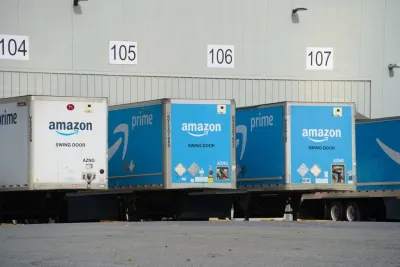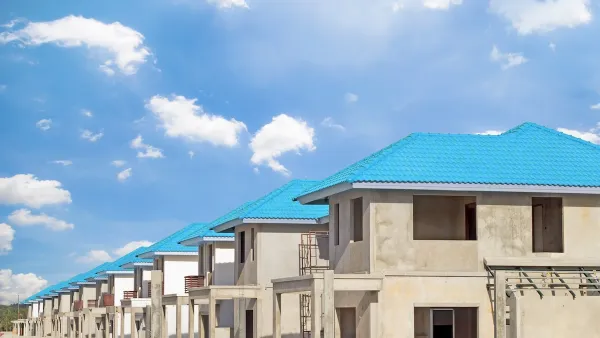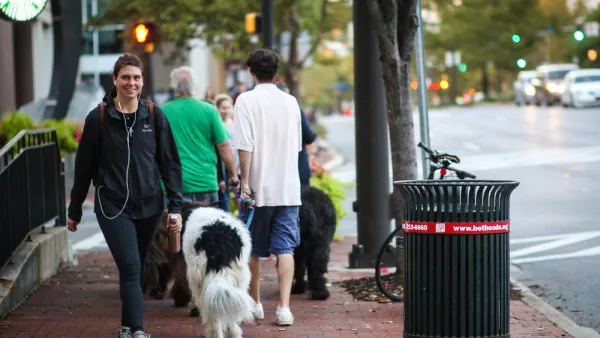Discover new trends in suburban development focused on creating more livable, sustainable communities for future growth.

Single-family homes, sprawling shopping centers and a reliance on cars have defined suburban areas for decades. Yet, as housing demand shifts and urban dynamics evolve, many suburbs are transforming. Rather than serving as bedroom communities for nearby cities, suburbs are embracing new development strategies prioritizing sustainability, connectivity and a stronger sense of community.
1. The rise of mixed-use developments
Suburban planning has always followed a modernist approach that prioritized single-use zoning, leading to car dependency and a decline in vibrant public spaces. While this model worked for a time, its limitations have become increasingly apparent as more people seek communities that offer convenience and accessibility.
Mixed-use developments have become a key solution, blending residential, commercial and recreational spaces to create self-sustaining neighborhoods. By integrating different functions within the same area, these developments reduce the need for long commutes and encourage local economic activity.
Additionally, they revitalize underutilized spaces, turning vacant lots into shopping hubs. As demand for these developments grows, suburbs evolve into more human-centric communities that cater to modern lifestyles.
2. Prioritizing green spaces and environmental stability
People have long associated suburbs with spacious yards and tree-lined streets. Yet, as development expands, many communities are losing green space in favor of asphalt and concrete.
Parks, community gardens and preserved natural areas are becoming increasingly vital to counteract the environmental and social effects of suburban sprawl. Integrating green spaces into suburban planning is crucial for improving public health, environmental sustainability and long-term property values.
Greenery also directly impacts how people feel about where they live. For example, removing a mature tree can greatly change a homeowner’s perception of their property and even decrease its market value. This is why disputes over boundary trees — such as whether a neighbor can legally remove one — often become contentious. A single tree can shape a home’s character and serve as a landmark in a community.
Recognizing the value of nature in suburban landscapes, many cities are incorporating more green infrastructure into their revitalization efforts. From urban forests to parklets, these initiatives enhance property values and build a sense of community.
3. Enhancing walkability and pedestrian-friendly designs
Today, there is a growing emphasis on safer walkways for pedestrians. Walkable communities offer numerous benefits, from reducing traffic congestion to promoting healthier lifestyles.
People living in walkable neighborhoods are more physically active and have greater opportunities for social interaction. Local businesses also thrive in pedestrian-friendly areas, as foot traffic naturally leads to more engagement with shops and restaurants.
Suburbs are also increasingly adopting urban design principles to consider people over cars. This includes widening sidewalks, adding bike lanes and improving crosswalks. Some communities even implement “complete streets” policies, ensuring roadways accommodate all users, including pedestrians and cyclists.
4. Integrating technology for smart and connected communities
Urban planners are increasingly integrating technology into suburban development. As digital infrastructure expands, newly constructed homes leverage smart technologies to enhance daily life and optimize resources.
One impactful area is energy efficiency. Artificial intelligence can manage energy systems, reducing household C02 emissions by 40% and lowering gas consumption by 5%. Adopting this smart technology helps homeowners cut costs while minimizing their environmental footprint.
Smart technology is also improving mobility, security and accessibility. Internet of Things (IoT) streetlights adjust brightness based on activity, reducing light pollution and energy waste. Smart traffic signals and parking systems alleviate congestion for smoother, more efficient commutes.
5. Strengthening public transit and mobility solutions
Traditional suburbs introduce traffic congestion and a lack of mobility for those without access to a car. However, the demand for sustainable and convenient alternatives is rising, so suburban planners are investing in new public transit and mobility solutions.
One promising development is the rise of autonomous public transportation. In 2019, Volvo introduced its first autonomous bus in Singapore, a fully driverless vehicle designed to improve transit safety and efficiency. With an 80-seat capacity and four LiDAR sensors, the bus can operate comfortably and safely without human intervention.
The future of suburban revitalization
These trending transformations enhance residents' quality of life and attract businesses and investment, creating long-term economic growth that helps suburban areas thrive.
As communities continue to adopt forward-thinking strategies, this type of living will prioritize more inclusivity, efficiency and sustainability. As such, the suburbs become more than a place to live — they are destinations in their own right.

National Parks Layoffs Will Cause Communities to Lose Billions
Thousands of essential park workers were laid off this week, just before the busy spring break season.

Retro-silient?: America’s First “Eco-burb,” The Woodlands Turns 50
A master-planned community north of Houston offers lessons on green infrastructure and resilient design, but falls short of its founder’s lofty affordability and walkability goals.

Delivering for America Plan Will Downgrade Mail Service in at Least 49.5 Percent of Zip Codes
Republican and Democrat lawmakers criticize the plan for its disproportionate negative impact on rural communities.

Test News Post 1
This is a summary

Test News Headline 46
Test for the image on the front page.

Balancing Bombs and Butterflies: How the National Guard Protects a Rare Species
The National Guard at Fort Indiantown Gap uses GIS technology and land management strategies to balance military training with conservation efforts, ensuring the survival of the rare eastern regal fritillary butterfly.
Urban Design for Planners 1: Software Tools
This six-course series explores essential urban design concepts using open source software and equips planners with the tools they need to participate fully in the urban design process.
Planning for Universal Design
Learn the tools for implementing Universal Design in planning regulations.
EMC Planning Group, Inc.
Planetizen
Planetizen
Mpact (formerly Rail~Volution)
Great Falls Development Authority, Inc.
HUDs Office of Policy Development and Research
NYU Wagner Graduate School of Public Service






























